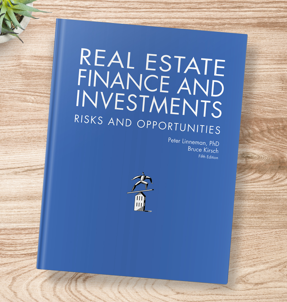|
Listen to this post if you prefer
|
What is the right cap rate to select for your sale valuation? Wharton Professor Emeritus Peter Linneman explains.
BRUCE KIRSCH: When purchasers acquire a property the cap rate at which they acquire it is simply a mathematical calculation once the transaction is done.
But when they make projections and look forward into some sale year in the future, in order to complete the pro-forma analysis they need to assign some future cap rate at which they anticipate they’ll be able to sell.
And naturally, the lower the cap rate, the more valuable the asset. Is it realistic for property owners to forecast a lower cap rate than the cap rate at which they purchased?
DR. PETER LINNEMAN: No. Generally there are exceptions. But generally you would expect the cap rate would be the same to higher.
The same is, the world doesn’t change. My property doesn’t change in its competitive position. The liquidity of my asset doesn’t change relative to today. And my interest rate environment that exists– nothing changes– is the same cap rate.
And there are times where, by the way if you were going to sell six months later maybe believing you’re going to sell at the same cap rate is a good thing.
Because how much do you think the world’s going to really differ in six months? If I’m going to plan to sell in 10 years the world could be a lot different in a lot of ways. Interest rates could be different. The competitive environment could be different. My property could be different.
Generally, if you anticipate holding for a reasonably long period– say seven to 10 years– generally you’d believe that no matter how much capital expenditure you do and how well you maintain your building, your building slowly is not as competitive as it once was. Slowly.
Somebody is going to build a new building. Somebody is going to renovate an old building in the market to bring it up. And even though your building may not have changed the other people are running a little faster.
To the extent your building isn’t quite as competitive as it used to be, you’re going to have to give people more income for the same price. That is, your cap rate would go up.
So as a general matter I would say, you should anticipate your exit cap rate on a seven to 10 year hold being somewhat higher than your purchase cap rate.
And you can always come up with exceptions, but that’s a general rule of thumb where all it’s reflecting is, as much as I might like, my building won’t be quite as competitive in 10 years as it is today.
BRUCE KIRSCH: Right. Now there is a potential situation where, while your property does age and becomes relatively less attractive to new stock or renovated stock that’s brought into the market, if, as a trend in your sub market, cap rates are compressing on a net basis it could end up being a wash, right?
DR. PETER LINNEMAN: It could be more than a wash. And I’ll give you a very simple example. You go back to after the Iron Curtain fell and the Soviet bloc collapsed. And people would be buying in Poland at cap rates of 10, 11, 12, 13.
And even though they knew their buildings would probably be eroding in their competitive position within the market over the next decade, the general belief is Poland was going to integrate from being part of the old Soviet empire into part of Western Europe.
And as it became part of Western Europe its risk would diminish. Its liquidity will increase. And therefore there was a belief in the secular decline in cap rates.
Namely, since I’m not dragging you to the Soviet Union, since I’m not dragging you to a non-liquid market 10 years from now, they’ll be a better cap rate. A lower cap rate.
Now that’s a risk you’re taking if you’re going to bet on that. But that was the most notable example I’ve seen in my life.
Interestingly as we sit here today there’s kind of an opposite situation, which is you’ve got 10 year treasuries at historic lows– the lowest they’ve been in 70 years. You’ve got interest rates sitting there.
And so people are saying, well, yeah, if interest rates stay where they’re at– 10 year treasury at basically 2% or less– the cap rate should be 5%. But do I really believe 10 years from now that the 10 year treasury will still be 1.7%?
Nobody is going to know for 10 years what the answer is. And you’ve got a lot of people saying, you know, I think there’s too big a chance the interest rates rise, having nothing to do with me over the next 10 years.
So I’m going to put the cap rate in 50 to 100 basis points higher for my exit than my entrance as a cushion. Now only time will tell if that was a good assumption or not. So you have to evaluate circumstances.
The starting point is, nothing changes. The same exit and entrance. Nothing changes. And then you have to say, what do I think change, and why, and then that’s what you’re relying on.
BRUCE KIRSCH: Right. And I think it’s important that students run these numbers just for their own edification at different cap rates to really come to appreciate the sensitivity of a transaction’s performance off of a basis point.
Because if you’re running a sensitivity table and your interval for your cap rate is 1% it’s kind of silly, right?
DR. PETER LINNEMAN: Right. Well, and you add to your sensitivity the equity, if you’ve leveraged. The power of leverage is if the cap rate moves for you– that is, it falls from when you buy– you do spectacularly. But it’s just as punishing in reverse. It’s wiping out.
And the one thing that I find a lot of people miss when they do cap rate sensitivity think is they go, well, you know– I just say, we were talking about should I pay a five cap, a five percentage yield to start with.
And you go, OK. I’ll go to a four and a half cap. It’s only 50 basis points. That’s nothing. You go, wait. 50 basis points on 500 basis points. Half a percent on five– that’s 10%. That’s a huge price change that I’m talking about. I mean, that’s huge, right?
So you have to think about them as a percentage change matter. So if I went from five to 4.99 it’s to your point. It’s a rounding error in terms of it. If I went from a 20 cap to a 19 and 1/2 cap it’s kind of a rounding error.
But if I go 50 basis points– the same 50 basis points– from a five to a four and a half, that’s 10%. So you’ve got to be aware of your sensitivity is more about percentage changes in price than absolute number of basis points. You’ve just got to always focus on that.
And especially when cap rates get very low people sometimes lose sight of the fact, thinking it’s only 10, 20 basis points. 10, 20 basis points– nothing, if you’re talking about very high cap rates. But it’s a big percent you’re talking about low cap rates.
BRUCE KIRSCH: Right. I mean it’s kind of like a faucet that’s very sensitive.
DR. PETER LINNEMAN: That’s exactly right.
BRUCE KIRSCH: If the water is really hot, making it slightly hotter– then you have to pull your hand away, even though you didn’t change it very much. But you know, it’s starting out at this very potent temperature to begin with.
DR. PETER LINNEMAN: Very well said.






Nice analogy used to describe the danger of playing in a low cap rate environment